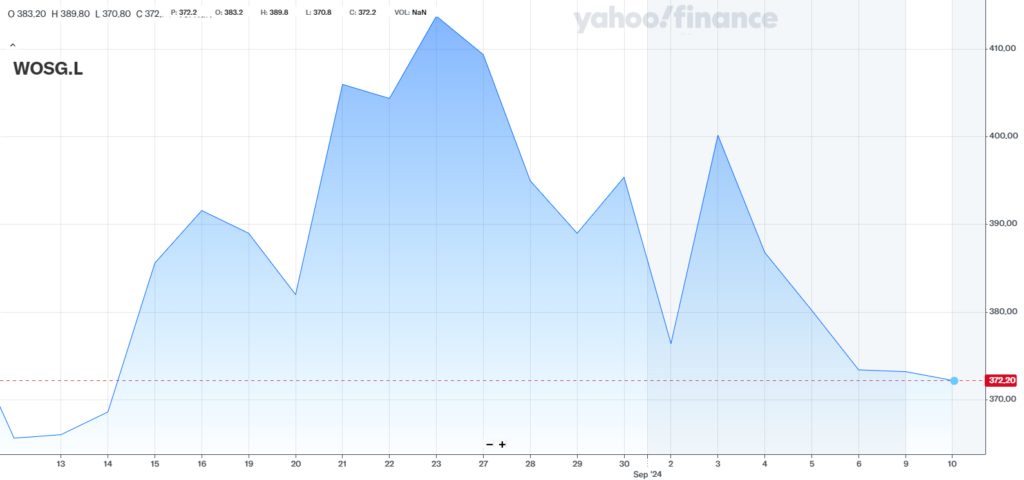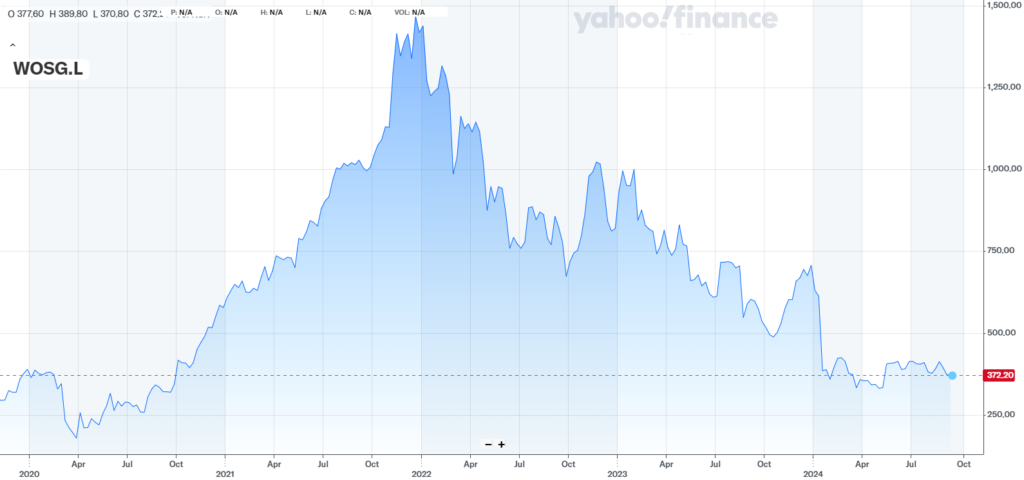A reassuring trading update from Watches of Switzerland Group did little to excite investors last week.
There was an initial spike in the company’s share price from around 380p to 416p, but the stock is now trading at around 380p again as markets concluded there is little to change their view of a business operating in a considerably cooler market than the end of 2021 when the price hit an all-time high of 1,470p.
That 2021 valuation was driven by the hype of lengthy waiting lists for key collections from the likes of Patek Philippe and Audemars Piguet and for virtually anything carrying the name of Rolex on the dial.
Secondary market prices were surging on the back of watches trading at ever-higher multiples of their RRPs and social media was awash with stories of bitcoin millionaires making a second fortune flipping watches.
I’m no stock picker, but there is reason to think that today’s valuation of Watches of Switzerland Group is fair and reasonable.
The average price to earnings (PE) ratio for FTSE 250 companies is 12.4. WoSG’s PE is higher than that at 15.08.

Market conditions today for luxury watches are similar to 2019, according to most retailers I speak to in both the UK and United States.
2019 was also the year of WoSG’s initial public offering, which saw stocks sold at 270p trading at around 300p for the first six months.
Watches of Switzerland is in the second year of what it calls a five year Long Range Plan.
That plan describes a path to double revenue from its FY23 base of £1.54 billion to exceed £3bn by the end of FY28.

Its trading update last week said the company is on track to deliver its FY25 guidance as it makes progress against its Long Range Plan.
“Demand for our key luxury brands, particularly products on Registration of Interest lists, remains strong in both the UK and US markets, outstripping supply, with consistent additions and conversions. Over the period, we have seen continued stabilisation of the UK market in both luxury watches and jewelry following a period of challenging macroeconomic conditions in the prior financial year. In the first half of FY25, we are increasing showroom stock levels in the US to enhance displays and client experience. As previously indicated, we expect US growth to be second half weighted,” WoSG’s trading statement describes.
The Long Range Plan describes a slew of growth opportunities: rising average prices (very much being delivered by the brands); growth in Rolex Certified Pre-Owned (of questionable value right now to retailers) and all other pre-owned watches; new stores; improved productivity by store and by brand; and a mission to expand its jewelry business, a mission given a boost by the acquisition of Roberto Coin’s American operation last year.
Reaching revenue of over £3 billion in FY28 will require growth to accelerate after sales came in lower than hoped at the back end of last year and the beginning of 2024.
The target certainly looks like a smaller landing spot than it had when the plan was unveiled, but there is no reason to believe it cannot be hit given the company’s experienced management, access to capital, advanced technology, prime store locations, deep relationships with brands and growing expertise in pre-owned watches and jewelry.
The elephant in the room remains Rolex’s relationship with WoSG rival Bucherer, which it acquired last year.
If Bucherer is favored with better allocations of Rolex watches, or given first option to acquire any Rolex authorized dealers that come up for sale, then that will hamper expansion and press the need for growth to come more organically through the current estate, other brands and pre-owned.
My view is that Rolex will not use Bucherer in this way, but that is a conclusion that traders in the stock will need to judge for themselves.

